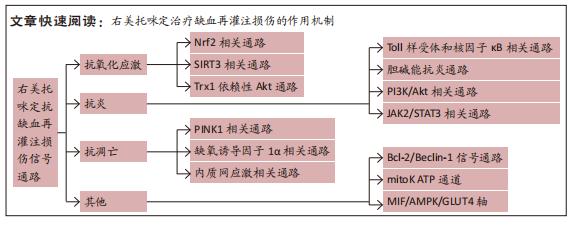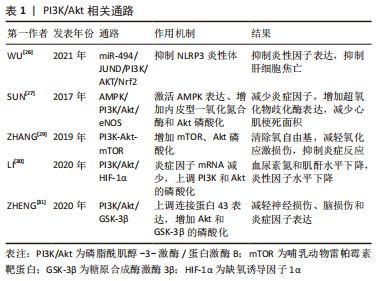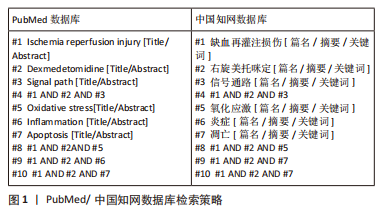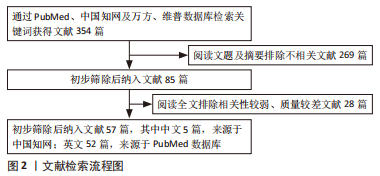[1] LAND WG. The role of postischemic reperfusion injury and other nonantigen-dependent inflammatory pathways in transplantation. Transplantation. 2005;79(5):505-514.
[2] WEERINK MAS, STRUYS MMRF, HANNIVOORT LN, et al. Clinical Pharmacokinetics and Pharmacodynamics of Dexmedetomidine. Clin Pharmacokinet. 2017;56(8):893-913.
[3] ENGELHARD K, WERNER C, EBERSPACHER E, et al. The effect of the alpha 2-agonist dexmedetomidine and the N-methyl-D-aspartate antagonist S(+)-ketamine on the expression of apoptosis-regulating proteins after incomplete cerebral ischemia and reperfusion in rats. Anesth Analg. 2003; 96(2):524-531.
[4] 袁培根,薛彬彬,林碧,等. Nrf2/ARE通路介导右美托咪定减轻肢体缺血/再灌注损伤中的作用[J].中国应用生理学杂志,2016,32(3):250-254+293.
[5] LI HX, WANG TH, WU LX, et al. Role of Keap1-Nrf2/ARE signal transduction pathway in protection of Dexmedetomidine preconditioning against myocardial ischemia/reperfusion injury. Biosci Rep. 2022;42(9):BSR20221306.
[6] YUAN PG, XUE BB, LIN B, et al. [Nrf2/ARE pathway mediates the reducing effect of Dexmedeto-midine on ischemia/reperfusion injury in skeletal muscle]. Zhongguo Ying Yong Sheng Li Xue Za Zhi. 2016; 32(3):250-254.
[7] WANG X, ZHANG B, LI G, et al. Dexmedetomidine Alleviates Lung Oxidative Stress Injury Induced by Ischemia-Reperfusion in Diabetic Rats via the Nrf2-Sulfiredoxin1 Pathway. Biomed Res Int. 2022;2022:5584733.
[8] YANG JJ, ZHAO YH, YIN KW, et al. Dexmedetomidine inhibits inflammatory response and oxidative stress through regulating miR-205-5p by targeting HMGB1 in cerebral ischemic/reperfusion. Immunopharmacol Immunotoxicol. 2021;43(4):478-486.
[9] LIU X, CHEN Z. The pathophysiological role of mitochondrial oxidative stress in lung diseases. J Transl Med. 2017;15(1):207.
[10] ZHOU Y, CHUNG ACK, FAN R, et al. Sirt3 Deficiency Increased the Vulnerability of Pancreatic Beta Cells to Oxidative Stress-Induced Dysfunction. Antioxid Redox Signal. 2017;27(13):962-976.
[11] WANG L, DING Y, BAI Y, et al. The activation of SIRT3 by Dexmedetomidine mitigates limb ischemia-reperfusion-induced lung injury. Ann Transl Med. 2022;10(6):319.
[12] CHEN L, CAO J, CAO D, et al. Protective effect of Dexmedetomidine against diabetic hyperglycemia-exacerbated cerebral ischemia/reperfusion injury: An in vivo and in vitro study. Life Sci. 2019;235: 116553.
[13] WU ZL, DAVIS JRJ, ZHU Y. Dexmedetomidine Protects against Myocardial Ischemia/Reperfusion Injury by Ameliorating Oxidative Stress and Cell Apoptosis through the Trx1-Dependent Akt Pathway. Biomed Res Int. 2020;2020:8979270.
[14] ARSLAN F, KEOGH B, MCGUIRK P, et al. TLR2 and TLR4 in ischemia reperfusion injury. Mediators Inflamm. 2010;2010:704202.
[15] YU M, WANG H, DING A, et al. HMGB1 signals through toll-like receptor (TLR) 4 and TLR2. Shock. 2006;26(2):174-179.
[16] GU J, SUN P, ZHAO H, et al. Dexmedetomidine provides renoprotection against ischemia-reperfusion injury in mice. Crit Care. 2011;15(3):R153.
[17] 游琼,吴铿,涂焰明,等.柚皮苷调控心肌核因子NF-κB炎症信号通路对糖尿病心肌病大鼠防治作用[J].中国免疫学杂志,2013,29(2):121-124.
[18] KIM E, KIM HC, LEE S, et al. Dexmedetomidine confers neuroprotection against transient global cerebral ischemia/reperfusion injury in rats by inhibiting inflammation through inactivation of the TLR-4/NF-κB pathway. Neurosci Lett. 2017;649:20-27.
[19] SUN Z, ZHAO T, LV S, et al. Dexmedetomidine attenuates spinal cord ischemia-reperfusion injury through both anti-inflammation and anti-apoptosis mechanisms in rabbits. J Transl Med. 2018;16(1):209.
[20] ZHAI Y, ZHU Y, LIU J, et al. Dexmedetomidine Post-Conditioning Alleviates Cerebral Ischemia-Reperfusion Injury in Rats by Inhibiting High Mobility Group Protein B1 Group (HMGB1)/Toll-Like Receptor 4 (TLR4)/Nuclear Factor kappa B (NF-κB) Signaling Pathway. Med Sci Monit. 2020;26:e918617.
[21] LI Y, LIU S. The Effect of Dexmedetomidine on Oxidative Stress Response Following Cerebral Ischemia-Reperfusion in Rats and the Expression of Intracellular Adhesion Molecule-1 (ICAM-1) and S100B. Med Sci Monit. 2017;23:867-873.
[22] ZHANG JJ, PENG K, ZHANG J, et al. Dexmedetomidine preconditioning may attenuate myocardial ischemia/reperfusion injury by down-regulating the HMGB1-TLR4-MyD88-NF-кB signaling pathway. PLoS One. 2017;12(2):e0172006.
[23] MA J, CHEN Q, LI J, et al. Dexmedetomidine-Mediated Prevention of Renal Ischemia-Reperfusion Injury Depends in Part on Cholinergic Anti-Inflammatory Mechanisms. Anesth Analg. 2020;130(4):1054-1062.
[24] ZHANG J, XIA F, ZHAO H, et al. Dexmedetomidine-induced cardioprotection is mediated by inhibition of high mobility group box-1 and the cholinergic anti-inflammatory pathway in myocardial ischemia-reperfusion injury. PLoS One. 2019;14(7):e0218726.
[25] JU Y, XIAO F, LU J, et al. Effect of Dexmedetomidine and cholinergic anti-inflammatory pathways in myocardial ischemia-reperfusion injury. Pak J Pharm Sci. 2020;33(3(Special)):1377-1382.
[26] WU Y, QIU G, ZHANG H, et al. Dexmedetomidine alleviates hepatic ischaemia-reperfusion injury via the PI3K/AKT/Nrf2-NLRP3 pathway. J Cell Mol Med. 2021;25(21):9983-9994.
[27] SUN Y, JIANG C, JIANG J, et al. Dexmedetomidine protects mice against myocardium ischaemic/reperfusion injury by activating an AMPK/PI3K/Akt/eNOS pathway. Clin Exp Pharmacol Physiol. 2017;44(9):946-953.
[28] SHAN X, ZHANG J, WEI X, et al. Dexmedetomidine attenuates renal ischemia-reperfusion injury through activating PI3K/Akt-eNOS signaling via α2 adrenoreceptors in renal microvascular endothelial cells. FASEB J. 2022;36(11):e22608.
[29] ZHANG J, JIANG H, LIU DH, et al. Effects of Dexmedetomidine on myocardial ischemia-reperfusion injury through PI3K-Akt-mTOR signaling pathway. Eur Rev Med Pharmacol Sci. 2019;23(15):6736-6743.
[30] LI BY, LIU Y, LI ZH, et al. Dexmedetomidine promotes the recovery of renal function and reduces the inflammatory level in renal ischemia-reperfusion injury rats through PI3K/Akt/HIF-1α signaling pathway. Eur Rev Med Pharmacol Sci. 2020;24(23):12400-12407.
[31] ZHENG X, CAI X, YE F, et al. Perioperative Dexmedetomidine attenuates brain ischemia reperfusion injury possibly via up-regulation of astrocyte Connexin 43. BMC Anesthesiol. 2020;20(1):299.
[32] 门运政,童旭辉,胡淼,等. JAK2/STAT3信号通路在右美托咪定抗小鼠脑缺血/再灌注损伤中的作用[J]. 华中科技大学学报(医学版),2020, 49(6):662-666,699.
[33] LIU H, LI J, JIANG L, et al. Dexmedetomidine pretreatment alleviates cerebral ischemia/reperfusion injury by inhibiting neuroinflammation through the JAK2/STAT3 pathway. Braz J Med Biol Res. 2022;55:e12145.
[34] ZHANG X, ZHOU J, HU Q, et al. The Role of Janus Kinase/Signal Transducer and Activator of Transcription Signalling on Preventing Intestinal Ischemia/Reperfusion Injury with Dexmedetomidine. J Nanosci Nanotechnol. 2020; 20(5):3295-3302.
[35] HAUSENLOY DJ, YELLON DM. New directions for protecting the heart against ischaemia-reperfusion injury: targeting the Reperfusion Injury Salvage Kinase (RISK)-pathway. Cardiovasc Res. 2004;61(3):448-460.
[36] BRINKMANN K, KASHKAR H. Targeting the mitochondrial apoptotic pathway: a preferred approach in hematologic malignancies? Cell Death Dis. 2014; 5(3):e1098.
[37] CHENG X, HU J, WANG Y, et al. Effects of Dexmedetomidine Postconditioning on Myocardial Ischemia/Reperfusion Injury in Diabetic Rats: Role of the PI3K/Akt-Dependent Signaling Pathway. J Diabetes Res. 2018;2018:3071959.
[38] KANE LA, LAZAROU M, FOGEL AI, et al. PINK1 phosphorylates ubiquitin to activate Parkin E3 ubiquitin ligase activity. J Cell Biol. 2014;205(2):143-153.
[39] DAS S, MITROVSKY G, VASANTHI HR, et al. Antiaging properties of a grape-derived antioxidant are regulated by mitochondrial balance of fusion and fission leading to mitophagy triggered by a signaling network of Sirt1-Sirt3-Foxo3-PINK1-PARKIN. Oxid Med Cell Longev. 2014;2014:345105.
[40] CHOI HK, CHOI Y, KANG H, et al. PINK1 positively regulates HDAC3 to suppress dopaminergic neuronal cell death. Hum Mol Genet. 2015;24(4): 1127-1141.
[41] ZHANG Q, LIU XM, HU Q, et al. Dexmedetomidine inhibits mitochondria damage and apoptosis of enteric glial cells in experimental intestinal ischemia/reperfusion injury via SIRT3-dependent PINK1/HDAC3/p53 pathway. J Transl Med. 2021;19(1):463.
[42] 斯妍娜,张媛,韩流,等. SIRT3介导CypD去乙酰化在右美托咪定减轻肾缺血再灌注损伤中的作用[J]. 中华麻醉学杂志,2016,36(2):239-241.
[43] WANG YQ, TANG YF, YANG MK, et al. Dexmedetomidine alleviates cerebral ischemia-reperfusion injury in rats via inhibition of hypoxia-inducible factor-1α. J Cell Biochem. 2019;120(5):7834-7844.
[44] GAO Y, YIN H, ZHANG Y, et al. Dexmedetomidine protects hippocampal neurons against hypoxia/reoxygenation-induced apoptosis through activation HIF-1α/p53 signaling. Life Sci. 2019;232:116611.
[45] KIMURA M, ICHIMURA S, SASAKI K, et al. Endoplasmic reticulum stress-mediated apoptosis contributes to a skeletal dysplasia resembling platyspondylic lethal skeletal dysplasia, Torrance type, in a novel Col2a1 mutant mouse line. Biochem Biophys Res Commun. 2015;468(1-2):86-91.
[46] HE YM, ZHANG Q, ZHENG M, et al. Protective effects of a G. lucidum proteoglycan on INS-1 cells against IAPP-induced apoptosis via attenuating endoplasmic reticulum stress and modulating CHOP/JNK pathways. Int J Biol Macromol. 2018;106:893-900.
[47] XU X, LIU T, ZHANG A, et al. Reactive oxygen species-triggered trophoblast apoptosis is initiated by endoplasmic reticulum stress via activation of caspase-12, CHOP, and the JNK pathway in Toxoplasma gondii infection in mice. Infect Immun. 2012;80(6):2121-2132.
[48] LI J, ZHAO Y, ZHOU N, et al. Dexmedetomidine Attenuates Myocardial Ischemia-Reperfusion Injury in Diabetes Mellitus by Inhibiting Endoplasmic Reticulum Stress. J Diabetes Res. 2019;2019:7869318.
[49] YANG YF, WANG H, SONG N, et al. Dexmedetomidine Attenuates Ischemia/Reperfusion-Induced Myocardial Inflammation and Apoptosis Through Inhibiting Endoplasmic Reticulum Stress Signaling. J Inflamm Res. 2021;14: 1217-1233.
[50] ZHAO L, ZHAI M, YANG X, et al. Dexmedetomidine attenuates neuronal injury after spinal cord ischaemia-reperfusion injury by targeting the CNPY2-endoplasmic reticulum stress signalling. J Cell Mol Med. 2019;23(12): 8173-8183.
[51] ZHAI M, LIU C, LI Y, et al. Dexmedetomidine inhibits neuronal apoptosis by inducing Sigma-1 receptor signaling in cerebral ischemia-reperfusion injury. Aging (Albany NY). 2019;11(21):9556-9568.
[52] MALIK SA, SHEN S, MARINO G, et al. BH3 mimetics reveal the network properties of autophagy-regulatory signaling cascades. Autophagy. 2011; 7(8):914-916.
[53] LUO C, OUYANG MW, FANG YY, et al. Dexmedetomidine Protects Mouse Brain from Ischemia-Reperfusion Injury via Inhibiting Neuronal Autophagy through Up-Regulating HIF-1α. Front Cell Neurosci. 2017;11:197.
[54] Zhang W, Zhang J. Dexmedetomidine preconditioning protects against lung injury induced by ischemia-reperfusion through inhibition of autophagy. Exp Ther Med. 2017;14(2):973-980.
[55] YUAN F, FU H, SUN K, et al. Effect of Dexmedetomidine on cerebral ischemia-reperfusion rats by activating mitochondrial ATP-sensitive potassium channel. Metab Brain Dis. 2017;32(2):539-546.
[56] 袁峰,付红光,孙凯,等. 线粒体ATP敏感性钾通道在右美托咪定减轻大鼠脑缺血再灌注损伤中的作用[J]. 中华麻醉学杂志,2014,34(4):500-502.
[57] CHEN S, LI A, WU J, et al. Dexmedetomidine reduces myocardial ischemia-reperfusion injury in young mice through MIF/AMPK/GLUT4 axis. BMC Anesthesiol. 2022;22(1):289. |




